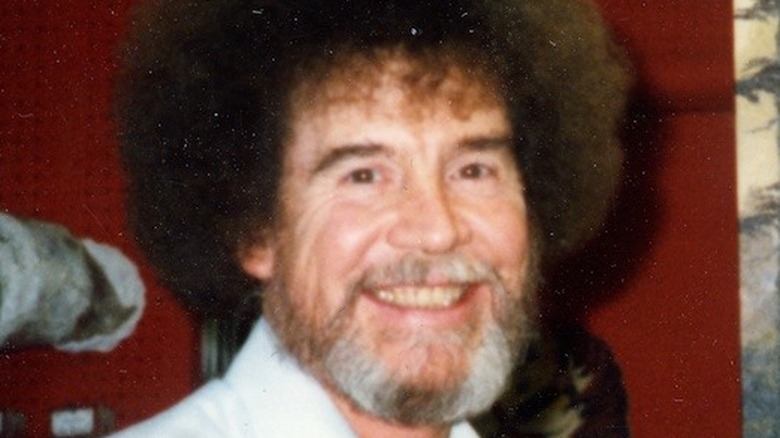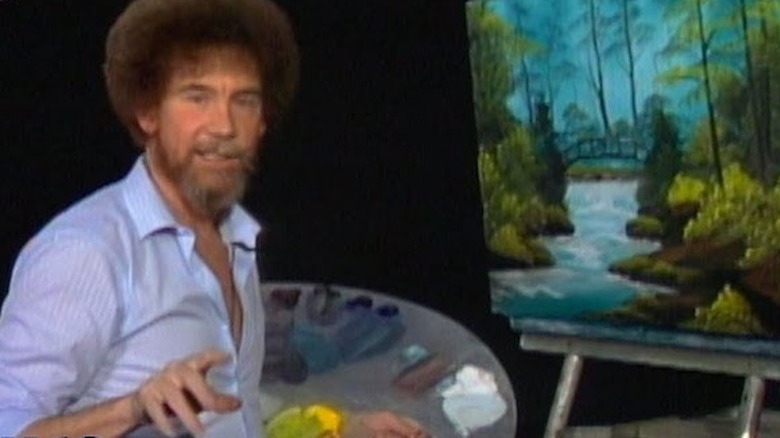How Long It Took Bob Ross To Film An Entire Season Of The Joy Of Painting
Thanks to the internet, Bob Ross has become more than just an icon to the kids who grew up watching his PBS show, "The Joy of Painting" in the 1980s and 1990s. With his trademark large perm, his calm and easy-going demeanor, and his ability to create impressive artwork in just a short period of time, Ross came about as one of the most likable individuals to grace our TV (and later, computer) screens. He was the antithesis of every curmudgeonly, perfectionist art teacher who'd scream at their students or make condescending comments toward them for the tiniest little mistake; for Ross, mistakes were "happy little accidents" that reminded us we're all human.
With the upcoming documentary "Bob Ross: Happy Accidents, Betrayal & Greed" set to drop on Netflix on August 25, viewers will soon get a chance to see what the streaming giant describes as a "sinister tale" of how his partners "hijacked" his business empire (via Paste). The documentary also has gotten people talking about Ross' legacy as a beloved painter and television personality, and how "The Joy of Painting" remained popular well after his death in 1995. Given that the show had a whopping 31 seasons over its 11-year run on PBS (via IMDb), one has to wonder — how long did it take for Ross to shoot an entire 13-episode season?
Ross only needed a couple of days to shoot one season
Regardless of whether you're working on a new movie, a new season of a popular television show, or a new album, it takes a lot of time to get these endeavors done. And when it comes to shooting TV series, that process alone could take upward of a few months due to all the moving parts that could complicate things behind the scenes. But for Bob Ross, all it took was a little more than two days per season of "The Joy of Painting," according to Mental Floss. Considering that he likely flubbed some lines and/or had one "happy accident" too many along the way, that makes this feat even more impressive. But the fast pace of shooting may have been born out of necessity, as that allowed Ross to return quickly to one of his primary means of making a living, which was by teaching painting.
That last part is very important because as Mental Floss explained, Ross did "The Joy of Painting" for free during its entire run on PBS. Aside from giving lessons, Ross earned money through his company, Bob Ross Inc., which sold art supplies and instructional videotapes and employed several art teachers who taught his technique while traveling the world. So if you come to think about it, "The Joy of Painting" was Ross' way of advertising his business while doing something he loved. And while he certainly didn't take long to shoot all those episodes of his show, that didn't affect their quality nor their impact as an all-in-one education, entertainment, and marketing tool.

